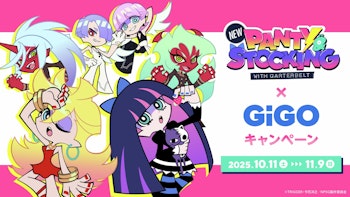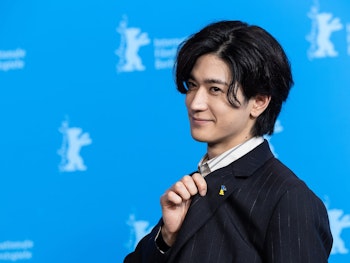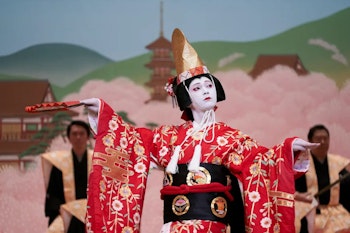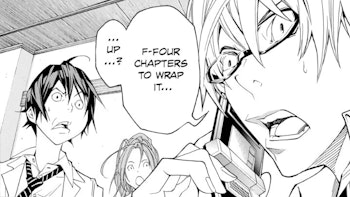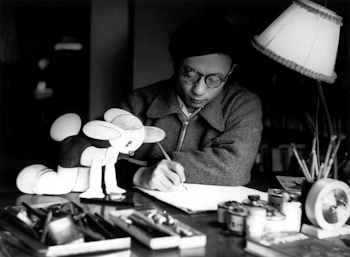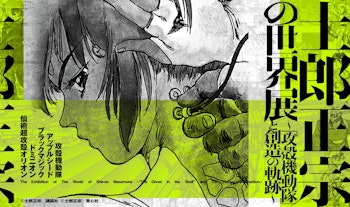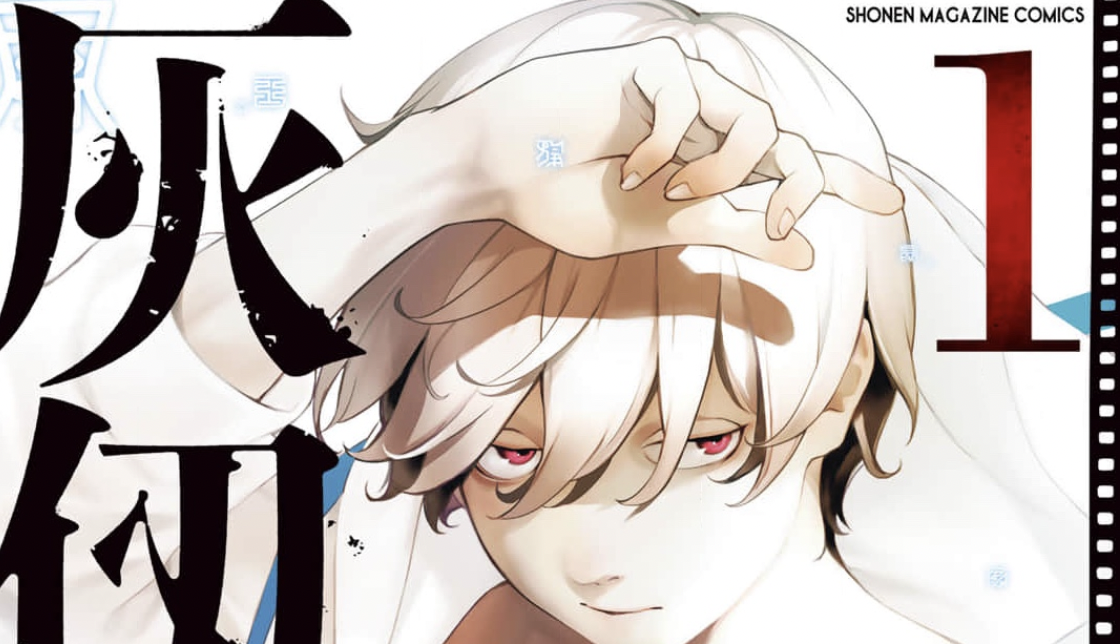
Oh! Great is finally free. After rising to fame in the 2000s with such hits as Tenjo Tenge and Air Gear, the award-winning artist then began a manga adaptation of Nisio Isin’s Bakemonogatari novels for Weekly Shonen Magazine in March 2018 that ended up lasting for over five years, filling more than twenty volumes, as well as covering Kizumonogatari in the process. It was a great series by almost every measure, but did mark a stark departure from the author’s career up until that point.
As a result, Kaijin Fugeki marks the first time in over a decade since one of manga’s most celebrated artists has launched an original series. Currently serialized once again in Weekly Shonen Magazine since May 2024, it has received so much buzz online that it’s apparently the best-selling series in the magazine right now following a number of reprints. Part of that is due to the fact that he recently drew an illustration of popular hololive virtual YouTuber Shishiro Botan for her birthday, but definitely don’t downplay how popular and well-known Oh! Great truly is. He’s a living legend.
With all of this in mind, the question remains: how has Oh! Great’s first original series in many years fared in comparison to his previous works? Is it the proof of enduring creativity, or the last gasps of an old hat on the way out? Considering the conversation online, suffice it to say that I went into Kaijin Fugeki with pretty big expectations.
Unfortunately, I found myself walking away a little bit disappointed.
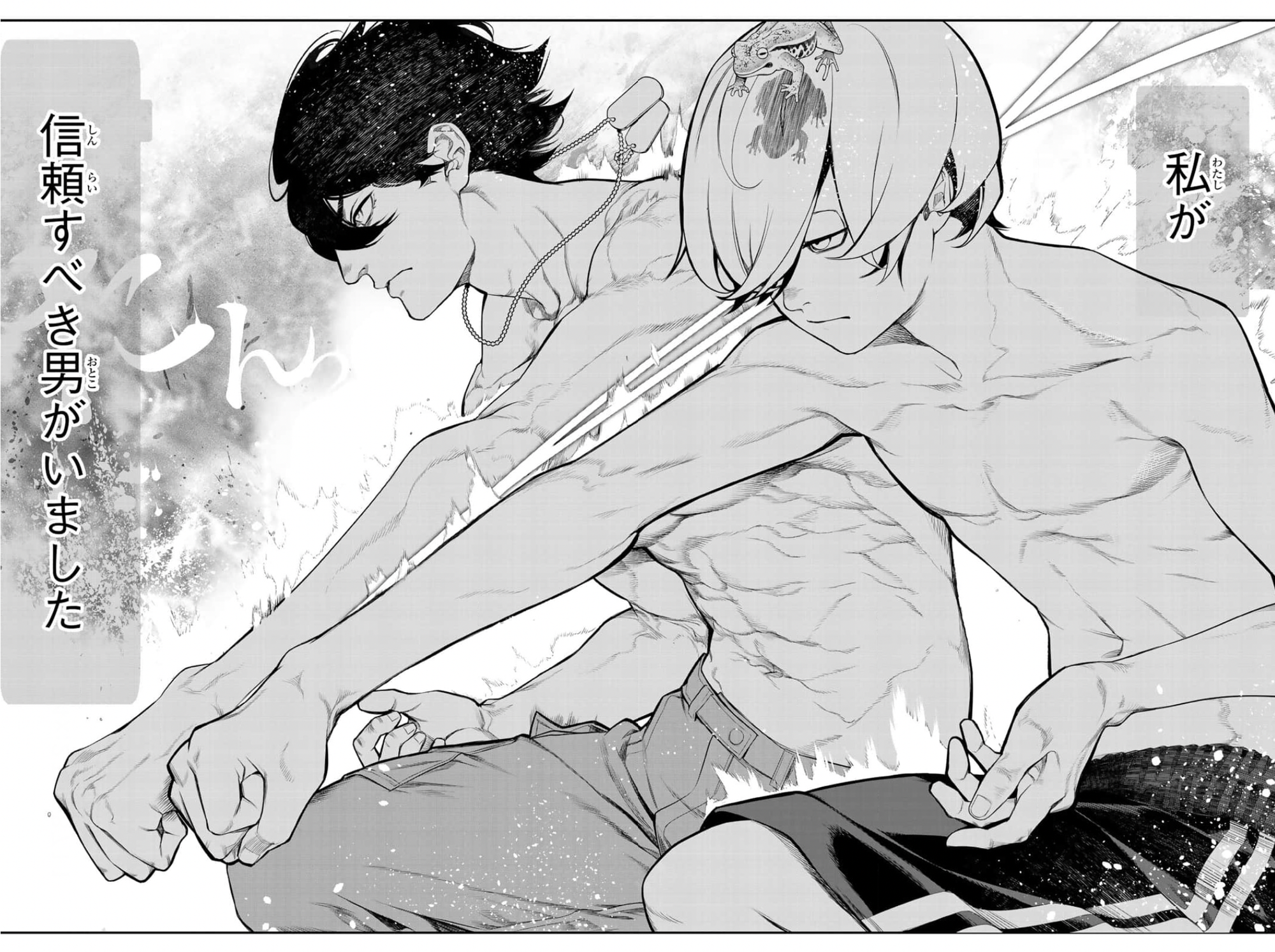
Kaijin Fugeki is one of those series that drops you straight in the deep end. If you make the decision to go and check out the first chapter, here is a brief summary of the events that will assault your senses: two sweaty boys wrestle topless in a tatami room, a two-headed girl enters before they go diving in a river, a giant monster attacks the village and the boys defeat it by dancing. It’s quite a lot, made even worse by the fact that none of this is accompanied by any explanation.
To draw a point of comparison, Berserk also has a similarly overwhelming first chapter. It opens with Guts having sex with a giant monster before blowing its brains out, after all, but the difference is that it also has narration and characters to explain things as the story goes on. In particular, Puck acts as a point of view character for the audience as he slowly enters into the world of the Black Swordsman. Kaijin Fugeki doesn’t have any of that: no narration, no characters for the audience to relate to, and no real indication as to what is going on.
A certain level of mystery is essential to any good story. Explaining everything to a reader right off the bat would not only be incredibly boring, but getting to find out more about the world and the characters is part of what makes a story interesting. That being said, withholding so much information from the audience that they don’t know what’s going on definitely isn’t a good move, and especially not in the first chapter. It’s often said that first impressions are everything, so how many readers will bounce off the series from the beginning because of this?
Quite naturally, Oh! Great does drop more information about the world and the characters as the story moves past its first chapter and into the first volume. We learn that the two sweaty boys are called Jin and Gao, that they are shamans who command the powerful Sword of Retribution, and that the two-headed girl is called Natsu and Fuyu. Nevertheless, some important elements still remain entirely unexplained: why does the world resemble our own in so many ways but with advanced technology? Why did natural disasters suddenly turn into giant magical monsters? And why does the British Empire still exist, now complete with futuristic rocket ships?
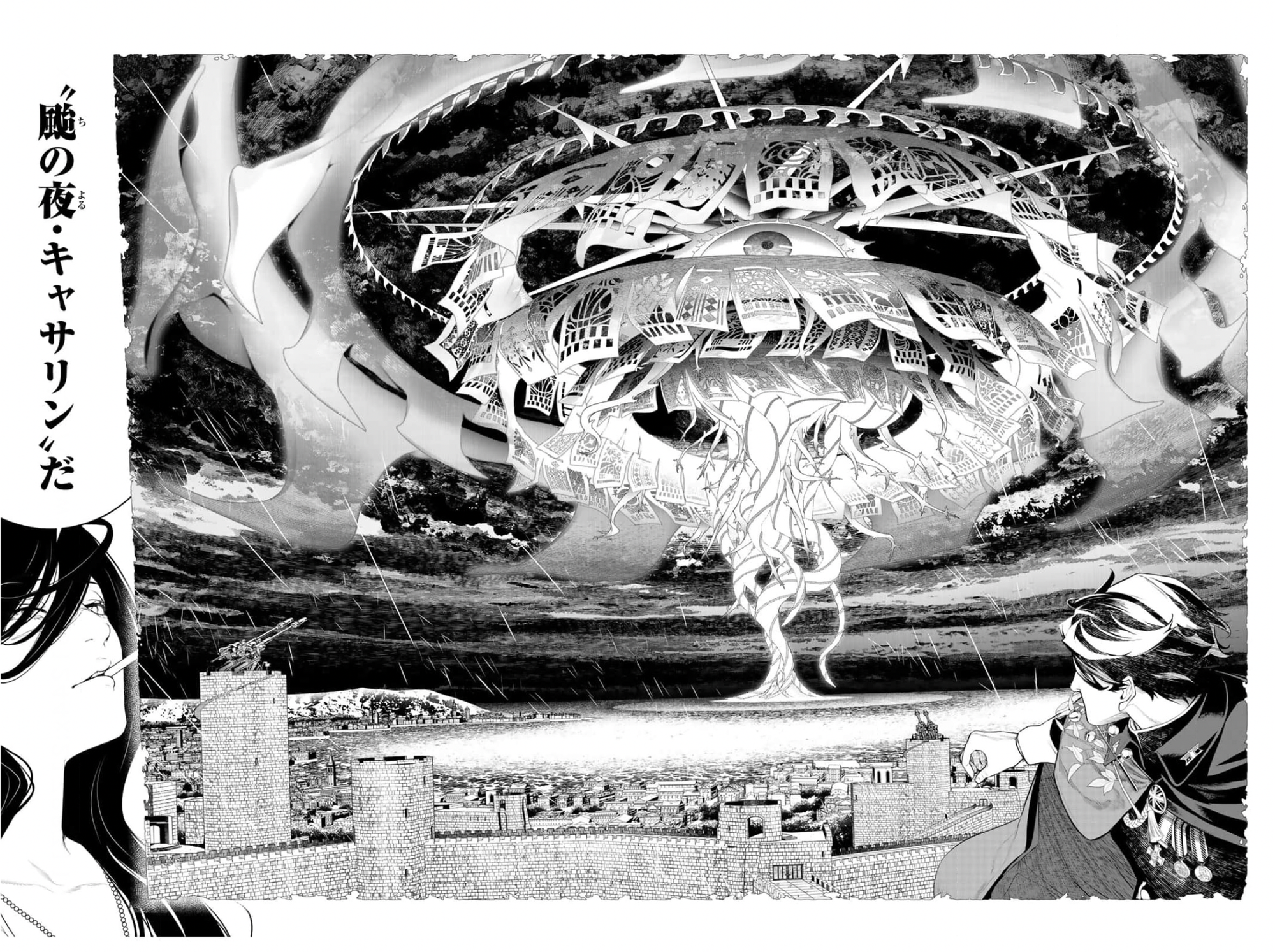
So many of these questions relate to the basic premise of the series, which means that confusion is baked into the series from the onset. In fact, I distinctly remember checking several times to see if I had accidentally started reading volume two when I making my way through volume one: you can’t help but shake the feeling that you’re missing something. Of course, some readers won’t care about this, but it bothered me quite a lot.
It’s honestly a shame that Kaijin Fugeki struggles to properly convey its world and premise, because there’s plenty of other things to love here. The characters have a warm internal dynamic, Gao’s background of being a British royal stuck in the Japanese countryside (don’t ask) leads to lots of interesting cross-cultural observations, and the artwork is absolutely stellar. Even if what they are is never made very clear, the “Night” creatures are rendered with such detail and at such tremendous scale that they are immediately iconic.
Perhaps the only part of Kaijin Fugeki I enjoyed that doesn’t come with a massive asterisk was Yukari’s storyline in volume two and beyond. Despite being born into a prestigious shaman family, Jin ends up being picked as the pilot of Sword of Retribution over her, leading to feelings of jealousy. These feelings then push her into accidentally unleashing a Night that takes away the soul of Fuyu, effectively leaving her lifeless. She then has to make up for the consequences of her own foolish actions by taking on the fox god Mano-Okuchi-no-Makami, all the while dealing with her hidden resentment towards Jin.
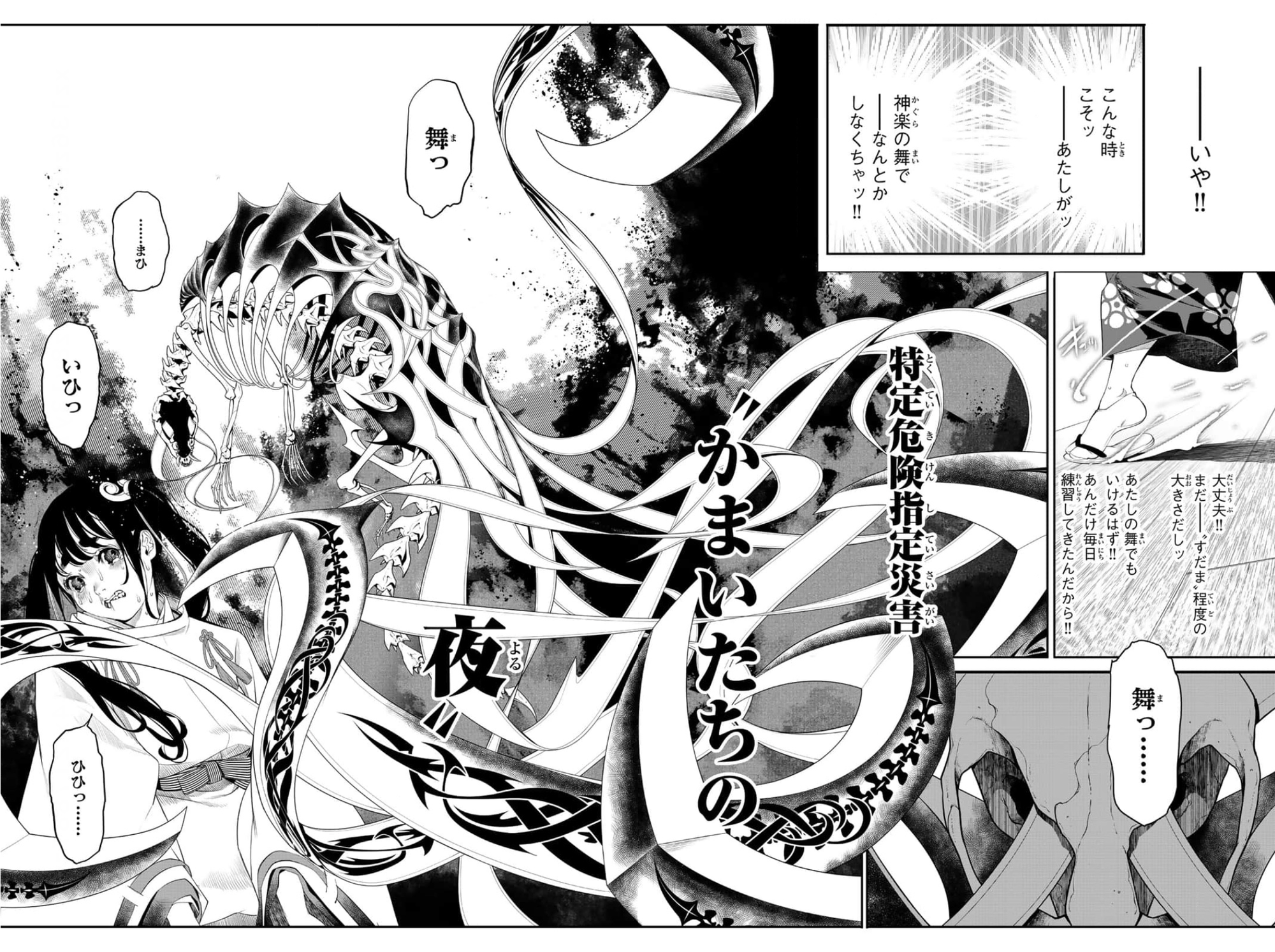
The reason why this storyline proved so enjoyable is that the reader is given all of the information necessary to follow along: we understand Yukari’s motivations, her background, as well as the mechanics through which she’s trying to fulfill her goal. I just wish I could say the same about the rest of the series, because as it stands, Kaijin Fugeki is pretty hard to recommend.
Oh! Great is finally free, but at what cost?
You can read Kaijin Fugeki in English via K MANGA.

